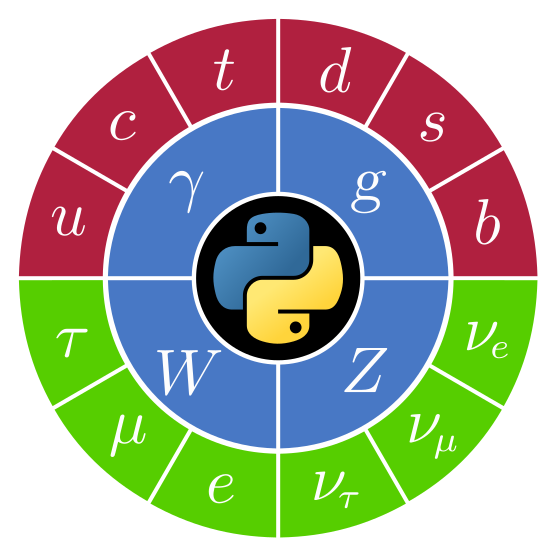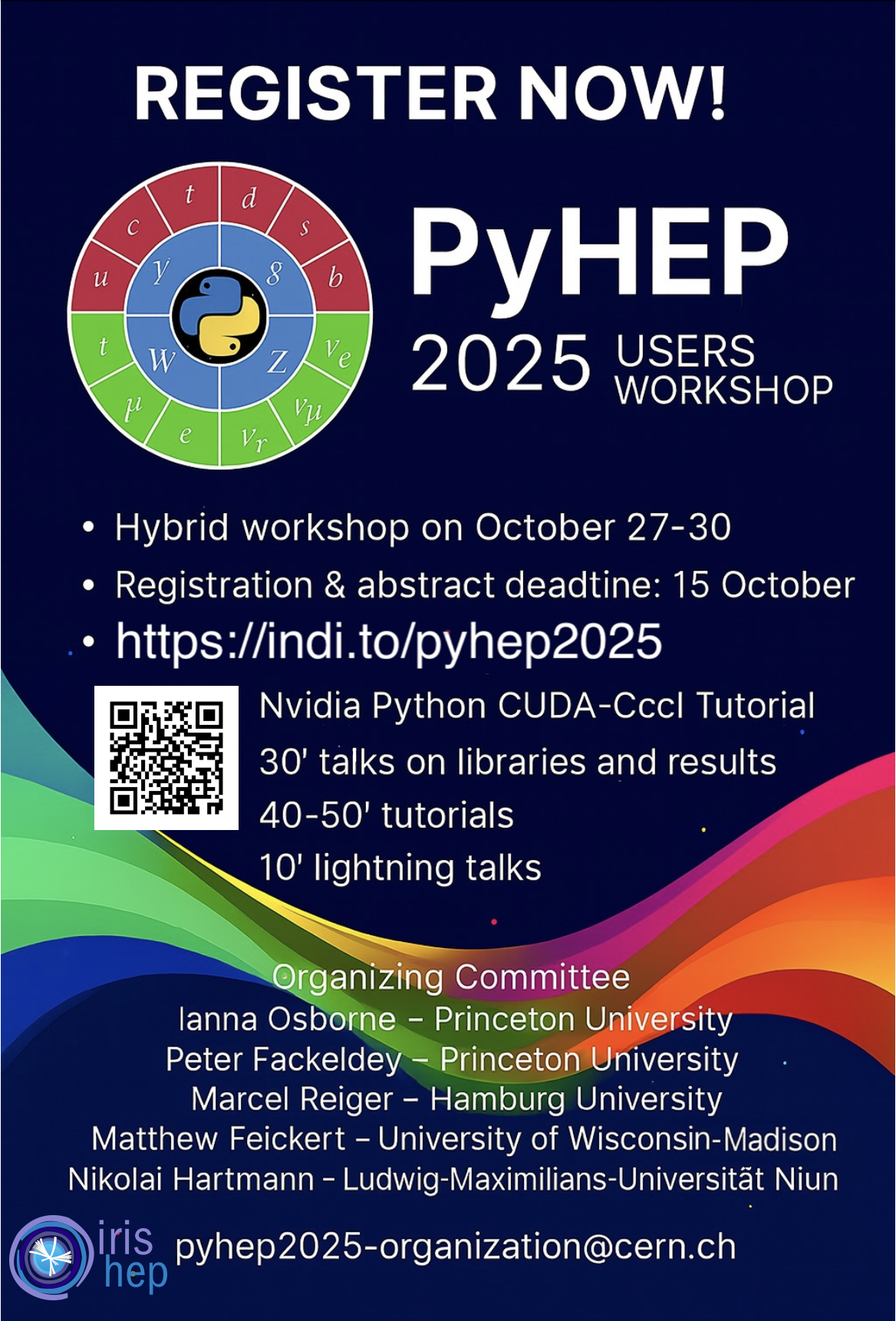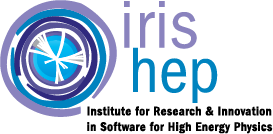PyHEP 2025 - "Python in HEP" Users Workshop (hybrid), CERN
 The PyHEP workshops are a series of workshops initiated and supported by the HEP Software Foundation (HSF) with the aim to provide an environment to discuss and promote the usage of Python in the HEP community at large. Further information is given on the PyHEP Working Group website.
The PyHEP workshops are a series of workshops initiated and supported by the HEP Software Foundation (HSF) with the aim to provide an environment to discuss and promote the usage of Python in the HEP community at large. Further information is given on the PyHEP Working Group website.
PyHEP 2025 will be a hybrid workshop, held in this format for the first time. While the event has traditionally taken place online, this edition will welcome participants both virtually and in person at CERN. The workshop will serve as a forum for participants and the wider community to discuss developments in Python packages and tools, share experiences, and help shape the future of community activities. Ample time will be dedicated to open discussions.
The agenda is composed of plenary sessions:

Organising Committee
Peter Fackeldey - Princeton University
Ianna Osborne - Princeton University
Nikolai Krug - Ludwig Maximilian University of Munich
Marcel Rieger - Hamburg University
Matthew Feickert - University of Wisconsin-Madison
Sponsors
The event is kindly sponsored by
